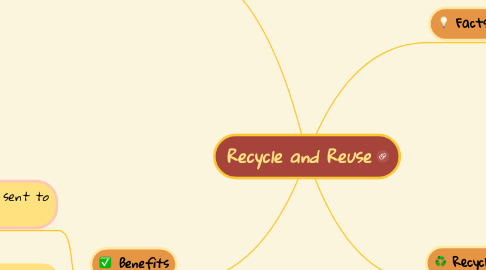
1. Recycling Bulk Processes
1.1. Material Recovery Facility (MRF)
1.1.1. 1. Sorting and distribution.
1.1.2. 2 Rrecyclables are usually spread on the floor
1.1.3. 3. Items are usually separated either manually or by the use of devices such as screens.
1.1.4. 4. Items are then transported to the various manufacturing plants when sold.
1.2. Refuse Derived Fuel (RDF)
1.2.1. 1. Paper and plastics must be separated
1.2.2. 2. They must be shredded to reduce the size
2. Benefits
2.1. 1. Reduce the amount of rubbish sent to the landfill
2.1.1. Less waste has to be buried in the ground in landfill sites
2.1.2. Save valuable resources by turning waste into new products!
2.1.3. Burying less rubbish means we have to build fewer landfill sites
2.2. 2. Save energy and raw materials
2.2.1. Recycling uses less energy than making items from scratch
2.3. 3. Help tackle climate change
2.3.1. Reducing the energy used to make and transport products means less carbon dioxide is released into the atmosphere.
2.3.2. Recycling also cuts the amounts of methane

